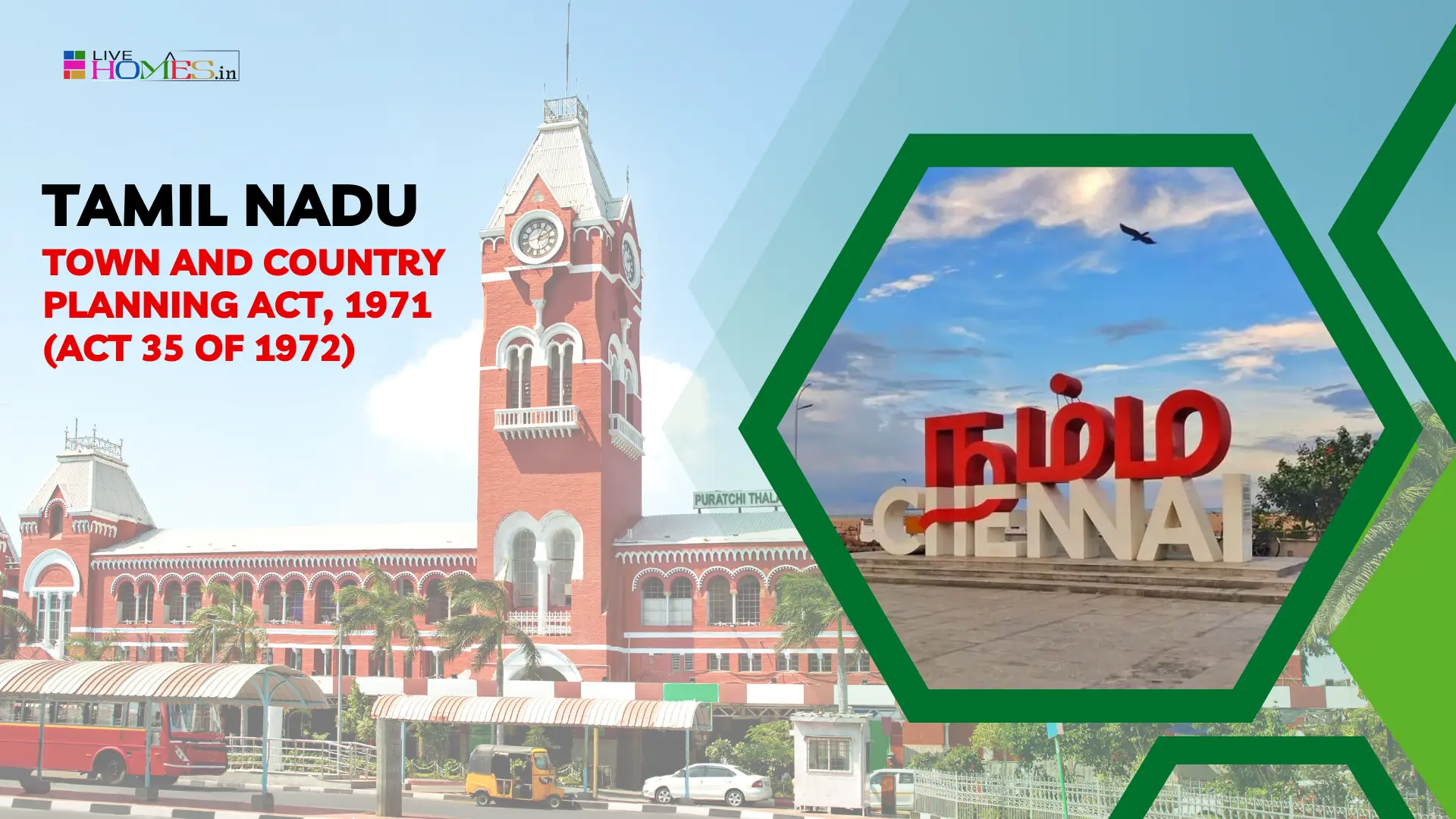The Tamil Nadu Town and Country Planning Act, 1971 (brought into force in 1972) is the principal law governing urban development, planning, and land use in Tamil Nadu.
Its main goal is to:
- Ensure orderly development of towns and cities.
- Regulate land use, building construction, and infrastructure layout.
- Protect public interest by defining proper street alignments, road widths, and building lines.
What is “Street Alignment”?
Definition (Simplified)
Street alignment means the boundary line that separates a street (public road, lane, or path) from the private land adjoining it. It represents the official limit or edge of a street as defined by the planning or municipal authority.
This alignment determines:
- Up to where the public street extends, and
- From where private property begins.
Legal Definition (as per Tamil Nadu Act 35 of 1972)
While the Act itself does not provide an exclusive standalone clause titled “Street Alignment”, it defines related terms under Section 2 and Subsequent Development Control Regulations framed under the Act.
According to the interpretation in practice (under Section 2 and allied municipal building bye-laws):
“Street alignment” means the line dividing a street or proposed street from adjoining land or the line defining the limits of a street laid down under the provisions of this Act or under any other law for the time being in force.”
Purpose of Street Alignment Regulations
The concept of street alignment plays a key role in urban planning. Its regulation under the Tamil Nadu Act ensures that:
- Road widening and future expansion can be planned properly.
- Encroachments into public streets are prevented.
- Building setbacks are maintained for safety, traffic flow, and aesthetics.
- Drainage, electricity, and utility lines can be laid efficiently.
- There’s a clear legal boundary between public and private land.
Provisions Related to Street Alignment under the Act
Power to Define and Prescribe Street Alignments
Under Sections 17, 18, 19, and 20 of the Tamil Nadu Town and Country Planning Act:
- The Planning Authority (such as CMDA, DTCP, or local municipal corporation) has the power to define the alignment of any street—existing or proposed.
- Once defined, the street alignment line becomes binding on all future developments along that road.
For example:
If the authority plans to widen a 30 ft road to 60 ft in the future, the new street alignment will show this proposed width.
Any new building must be constructed behind this line, leaving space for future road widening.
Prohibition of Construction within Street Alignment
As per the Development Control Rules under the Act:
- No person shall construct any building or wall within the street alignment or building line fixed by the competent authority.
- Any existing structure within the alignment may be subject to demolition or relocation during road widening.
This is enforced by local bodies like:
- Greater Chennai Corporation (for city areas),
- Municipalities,
- Town Panchayats, or
- DTCP (for non-CMDA areas).
Reservation of Land for Future Roads
Under Sections 26–29, land may be reserved or acquired for:
- Road widening,
- New street formation,
- Traffic improvements, etc.
Street alignment helps in legally identifying which part of private land will eventually be taken for public use (road expansion).
Example for Clarity
Imagine a street in Perambur that is 30 feet wide today.
- The CMDA’s Master Plan 2026 shows that the street alignment is fixed at 60 feet (30 ft existing + 30 ft future widening).
- Therefore, any new building constructed along this road must leave a setback equal to the extra 30 ft (15 ft on each side or as per alignment plan).
- This ensures that when the road is widened later, no building obstructs the expansion.
Street Alignment vs. Building Line
| Team | Meaning | Purpose |
| Street Alignment | The official edge of the public road as fixed by t he authority | Defines where the public road ends and private property begins. |
| Building Line | The minimum distance between the street alignment and the face of a building | Ensure adequate setback for ventilation, light and road widening |
Implementation Authorities
Depending on the area, the following agencies enforce street alignment regulations under the Act:
| Area Type | Authority | Application Rules |
| Chennai Metropolitan Aea | CMDA | Development Regulations 2026 |
| Other Muniuciples Areas | DTCP | Tamil Nadu Combined Development and Building Rules, 2019 |
| Village / Panchayat Areas | Local Panchayat or DTCP | Rural development Rules |
Violation and Consequences
If a person constructs within the street alignment:
- The construction is considered unauthorized.
- The local body can issue notice for demolition or withhold approval of the building plan.
- During road widening, the encroached portion will be removed without compensation.
Summary
| Aspect | Explanation |
| Legal Sources | Tamil Nadu Town and Country Palnning Act, 1971 ( Act 35 of 1972 ) |
| Core Idea | Defines and regulates the ofiicial edge of street and ensures constrolled development |
| Key Authority | Planning Authority ( CMDA, DTCP / Municipality ) |
| Purpose | Orderly development, prevention of enroachment, and space of future road widening. |
| Restriction | No building or structure allowed within street alignment line. |
Conclusion
The regulation defining street alignment under the Tamil Nadu Act 35 of 1972 forms a foundation for urban planning in Tamil Nadu. It clearly separates public street areas from private lands, enabling systematic city growth, traffic management, and future infrastructure expansion. Every landowner or builder must therefore verify the street alignment before applying for building plan approval, as it determines the setback and construction limits for that property.
https://www.livehomes.in/blogs













